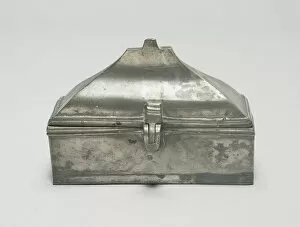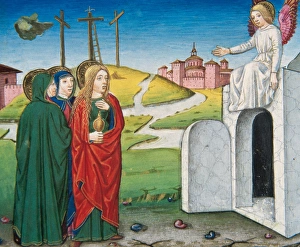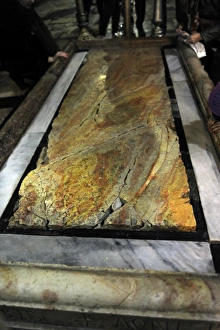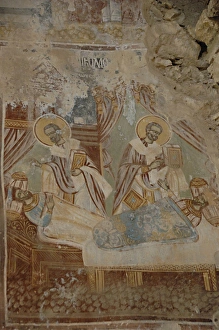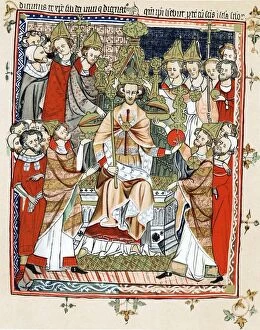Unction Collection
"Unction: A Sacred Ritual of Anointing and Healing" Inside the Church of the Holy Sepulchre in Jerusalem
All Professionally Made to Order for Quick Shipping
"Unction: A Sacred Ritual of Anointing and Healing" Inside the Church of the Holy Sepulchre in Jerusalem, a profound sense of reverence fills the air as worshippers gather to witness an ancient ritual known as unction. This sacred ceremony holds deep significance for Christians around the world, symbolizing both physical and spiritual healing. One iconic depiction portrays St Mary Magdalene, Salome, and Mary Jacoby making their way to the tomb where Jesus was laid after his crucifixion. Their purposeful steps echo with devotion and anticipation as they carry precious oils for anointing. Intriguingly, a 17th-century chrismatory from France captures our attention. Its mysterious creator remains unknown, yet its intricate design suggests a vessel meant for holding holy oils used during unction ceremonies. The craftsmanship speaks volumes about the importance placed on this sacrament throughout history. A black-and-white photograph transports us to Jerusalem's Holy Sepulchre, where we glimpse the Stone of Unction. This hallowed stone is believed to be where Jesus' body was prepared for burial—anointed with fragrant oils before being wrapped in linen cloths. An engraving depicting extreme unction further emphasizes its significance within religious practices. The image evokes solemnity as priests administer this sacrament to those nearing death, offering solace and spiritual comfort in their final moments. The oil paintings "Extreme Unction" by an unknown artist from 1638-40 capture poignant scenes from this sacred rite. Brushstrokes convey emotions ranging from hope to acceptance as individuals receive blessings through anointing—a tangible connection between heaven and earth. Even historical events find themselves intertwined with unction's narrative; lithographs depict Charles I receiving this sacrament during his final hours—a testament to its enduring presence throughout centuries past.


